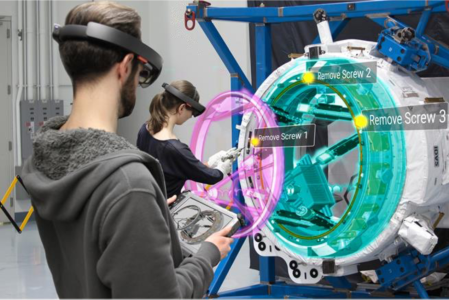Augmented and Virtual Reality Techniques To Enhance the Execution of Operational Procedures by Astronauts and Spacecraft Operators

Augmented reality (AR) displays are image-forming systems that use a set of optical, electronic, and mechanical components to generate images somewhere on the optical path between an observer’s eyes and the physical object to be augmented.
AR provides a live direct or indirect view of a physical, real-world environment and augments (or supplements) this view with computer-generated input such as sound, video, graphics, 3D objects or GPS data.
AR improves users’ experience by enabling them to interact with and learn from whatever they are observing. The deployment of AR tools within a field service environment can have a measurable improvement on key performance indicators (KPIs) related to quality, productivity, and efficiency such as "Mean Time to Repair", "First Time Fix Rate", and "Mean Time between Failures".
The aim of this study was to explore the potential of modern AR technologies, to identify and analyse application scenarios in the area of ESA's operations, and to investigate possibilities for integrating AR within ESA's ground system software, specifically a mission control system. Thereby, the scope was twofold: on one hand, the identification and analysis of application scenarios, which was intentionally kept open to not limit the process of finding application scenarios by potential limitations of the current technology. On the other hand, a concrete proof of concept was implemented to gain hands-on experience with and showcase the application of AR. Both, application scenarios and the proof of concept are intended to serve as a basis for future activities.
